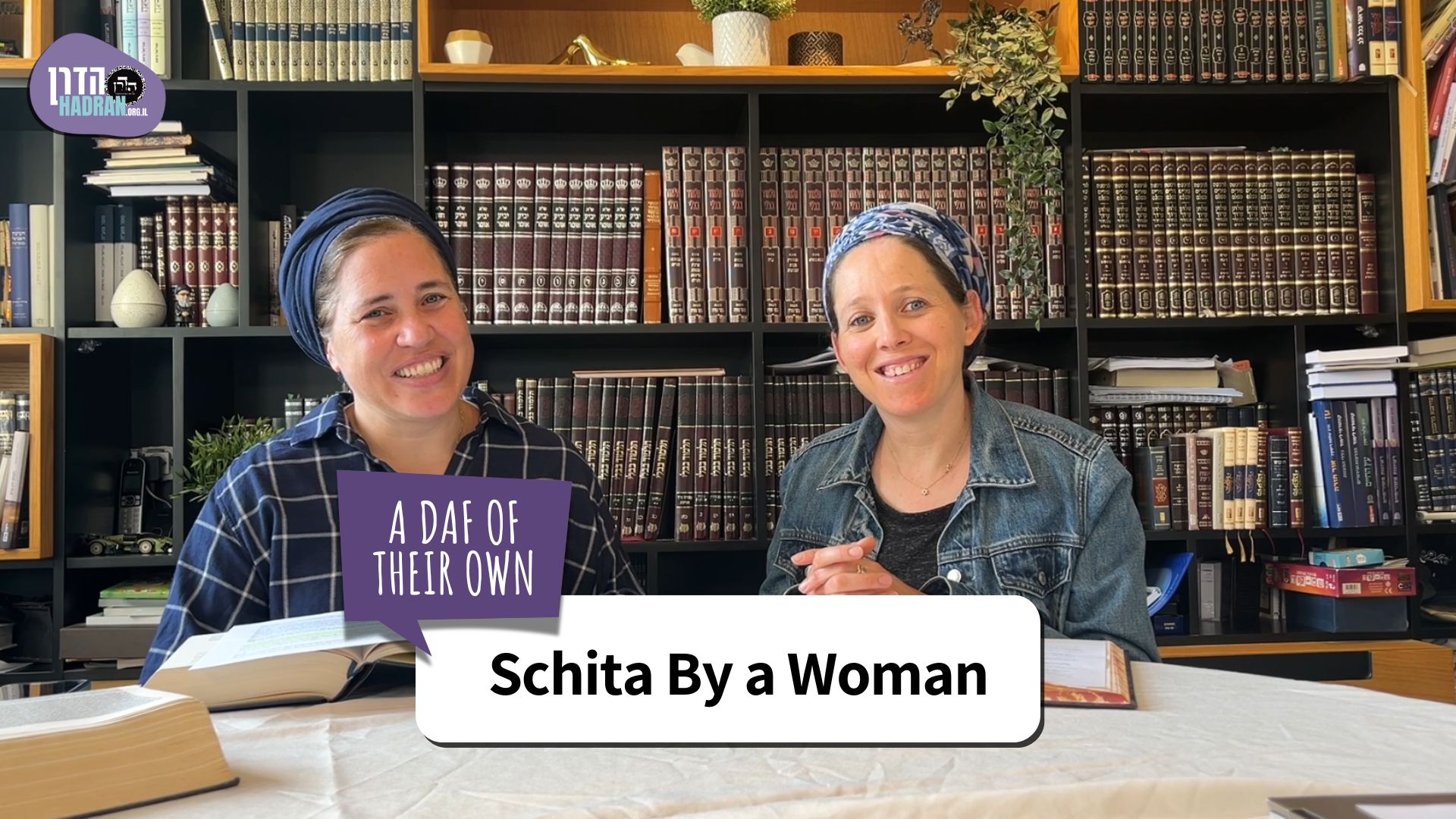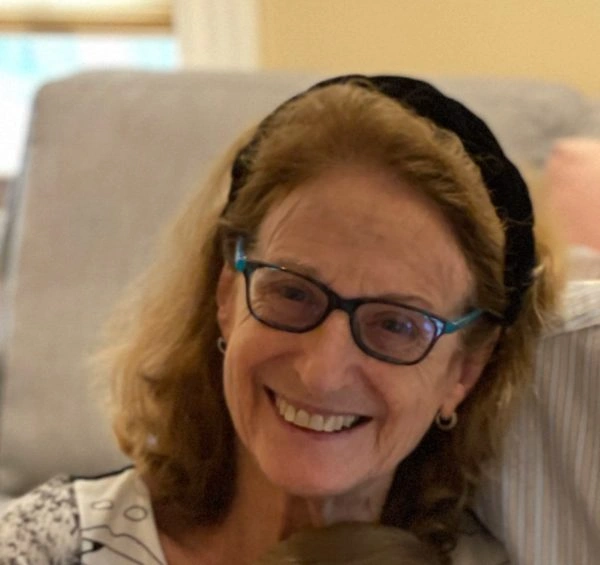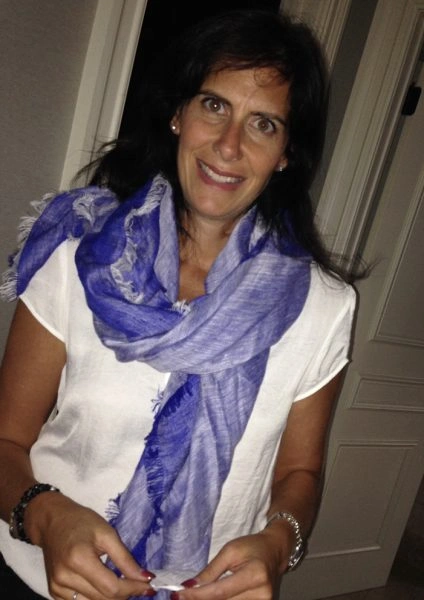Zevachim 33
Share this shiur:
Masechet Zevachim
Masechet Zevachim is sponsored by Esther Kremer in loving memory of her father, Manny Gross on his third yahrzeit. “He exemplified a path of holiness and purity, living with kedushah in his everyday life.”
This week’s learning is sponsored by Robert and Paula Cohen in loving memory of Joseph Cohen, Yosef ben Moshe HaCohen, z”l. “He was hard working, loved to sing, esp. as a chazan, and was very dedicated to his family and community.”
Want to dedicate learning? Get started here:


Summary
Ulla said in the name of Reish Lakish that even if an impure person inserts only a small part of their body into the Azara (Temple courtyard), it is forbidden. Rav Hoshaya challenges this ruling based on a case involving a leper who experienced a seminal emission on the eve of Passover. Despite his impurity, he is permitted to proceed with the purification process, which requires partial entry into the Azara. Ulla resolves this difficulty.
A braita is brought in support of Ulla’s statement, discussing the smicha (laying of hands) on the guilt offering of a leper, which is performed outside the Azara. The implication is that if partial entry were permitted, the leper could simply insert his hands into the Azara to perform the smicha. Rav Yosef rejects this support, and there are two distinct versions of how he rejects this.
A difficulty is raised against the content of the braita: if the guilt offering requires smicha by Torah law, and if smicha must be performed immediately prior to slaughtering, then it should be permitted to perform the smicha inside the Azara. Rav Ada bar Matna resolves this challenge, though there are differing accounts of how he does so.
Ravina and Ravin each offer alternative resolutions to the difficulty with Ulla’s statement. Ravina maintains that partial entry into the Azara is prohibited only by a penalty of lashes, without the more severe punishment of karet. Ravin, on the other hand, argues that Ulla’s citation of Reish Lakish was inaccurate. According to Ravin, Reish Lakish was referring to lashes incurred by one who touches sacrificial items (kodashim), not one who enters the Azara.
This leads to a broader debate between Reish Lakish and Rabbi Yochanan regarding the interpretation of the verse “do not touch kodesh.” Reish Lakish understands it as referring to sacrificial items, while Rabbi Yochanan interprets it as referring to teruma.
A question arises: how can Reish Lakish derive both the prohibition to touch and the prohibition to eat sacrificial items from the same verse, as he does in a separate debate with Rabbi Yochanan? The Gemara addresses this and explains how both prohibitions can be learned from the same textual source.
Today’s daily daf tools:
Masechet Zevachim
Masechet Zevachim is sponsored by Esther Kremer in loving memory of her father, Manny Gross on his third yahrzeit. “He exemplified a path of holiness and purity, living with kedushah in his everyday life.”
This week’s learning is sponsored by Robert and Paula Cohen in loving memory of Joseph Cohen, Yosef ben Moshe HaCohen, z”l. “He was hard working, loved to sing, esp. as a chazan, and was very dedicated to his family and community.”
Today’s daf is sponsored by Hannah and Michael Piotrkowski “in gratitude to President Trump, PM Netanyahu, the IDF and the people of Israel for persevering to bring home the hostages and be”H usher in the dawn of peace in our region.”
Today’s daily daf tools:
Delve Deeper
Broaden your understanding of the topics on this daf with classes and podcasts from top women Talmud scholars.
New to Talmud?
Check out our resources designed to help you navigate a page of Talmud – and study at the pace, level and style that fits you.
The Hadran Women’s Tapestry
Meet the diverse women learning Gemara at Hadran and hear their stories.
Zevachim 33
מִכְּלָל דְּתַרְוַיְיהוּ סְבִירָא לְהוּ: טוּמְאָה דְּחוּיָה הִיא בְּצִבּוּר.
The Gemara comments: It can be derived by inference that both Abaye and Rava hold that impurity is overridden in cases involving the public and is not entirely permitted.
לֵימָא מְסַיַּיע לֵיהּ: כׇּל הַסְּמִיכוֹת שֶׁהָיוּ שָׁם קוֹרֵא עֲלֵיהֶן אֲנִי תֵּכֶף לִסְמִיכָה שְׁחִיטָה;
The Gemara returns to discussing Ulla’s statement that partial entry of a ritually impure individual is considered entry: Let us say that a baraita (Tosefta, Nega’im 8:10) supports Ulla’s opinion: Concerning all the cases of placing hands that were there in the Temple, I say about them that the principle: Immediately following the placing of hands on the head of an offering is its slaughter, is applied, meaning that these acts must take place uninterruptedly and in the same location.
חוּץ מִזּוֹ שֶׁהָיְתָה בְּשַׁעַר נִקָּנוֹר, שֶׁאֵין מְצוֹרָע יָכוֹל לִיכָּנֵס לְשָׁם עַד שֶׁמַּזִּין עָלָיו מִדַּם חַטָּאתוֹ וּמִדַּם אֲשָׁמוֹ. וְאִי אָמְרַתְּ בִּיאָה בְּמִקְצָת לֹא שְׁמָהּ בִּיאָה – לִיעַיֵּיל יְדֵיהּ וְלִסְמוֹךְ!
This is so except for this case of a leper who places hands on his guilt offering, which was done in the threshold of the Nicanor Gate and not in the Temple courtyard where the guilt offering was slaughtered. The reason for this is that a leper cannot enter the courtyard until they sprinkle from the blood of his sin offering and from the blood of his guilt offering on the altar on his behalf. The Gemara explains the proof: And if you say that partial entry is not considered entry, let him insert his hands and place them on the head of the offering, and the offering should then be slaughtered in that location next to the gate.
אָמַר רַב יוֹסֵף: הָא מַנִּי – רַבִּי יוֹסֵי בְּרַבִּי יְהוּדָה הִיא, דְּאָמַר: מְרַחַק צָפוֹן.
Rav Yosef said: There is no proof from here, as in accordance with whose opinion is this baraita? It is in accordance with the opinion of Rabbi Yosei, son of Rabbi Yehuda, who says that the northern side of the courtyard in which it is permitted to slaughter offerings of the most sacred order, which includes a guilt offering, includes only the area to the north of the altar and not the entire northern section of the courtyard. This area is far north of the entrance to the courtyard, i.e., more than twenty-two cubits away. Consequently, even if the leper were to insert his hands into the courtyard and place them on the head of his guilt offering, it would not be permitted to slaughter it there.
וְלֶיעֱבֵד פִּישְׁפֵּשׁ! אַבָּיֵי וְרָבָא דְּאָמְרִי תַּרְוַיְיהוּ: ״הַכֹּל בִּכְתָב מִיַּד ה׳ עָלַי הִשְׂכִּיל אֶת כׇּל מְלֶאכֶת הַתַּבְנִית״.
The Gemara suggests: But let an opening [pishpash] be made in the northern courtyard wall facing the altar, where the leper can insert his hands. The Gemara explains: Abaye and Rava both say that such structural changes cannot be made to the Temple, since the verse states with regard to the Temple construction: “All in writing, as the Lord has made me wise by His hand upon me, even all the works of this pattern” (I Chronicles 28:19).
אִיכָּא דְּאָמְרִי, אָמַר רַב יוֹסֵף: כָּל הַסּוֹמֵךְ – רֹאשׁוֹ וְרוּבּוֹ מַכְנִיס, מַאי טַעְמָא? כֹּל כֹּחוֹ בָּעֵינַן; הִלְכָּךְ לָא אֶפְשָׁר.
There are those who say that Rabbi Yosef said another explanation as to why the leper cannot insert his hands into the courtyard and place them on the head of the offering: Anyone who places hands on the head of an offering must insert his head and most of his body into the courtyard. What is the reason? We require placing hands with all of his force. Therefore, it is not possible for the leper to perform the placing of his hands properly without entering the courtyard, and the placing of hands on the offering is done instead in the threshold of the Nicanor Gate.
מַאי קָסָבַר? אִי קָסָבַר סְמִיכַת אֲשַׁם מְצוֹרָע דְּאוֹרָיְיתָא, וְתֵכֶף לִסְמִיכָה שְׁחִיטָה דְּאוֹרָיְיתָא – לֵיעוּל וְלִסְמוֹךְ לְהֶדְיָא, דְּרַחֲמָנָא אָמַר!
The Gemara clarifies: What does the tanna of the baraita hold? If he holds that placing hands on the head of a guilt offering of a leper is by Torah law, and the principle that immediately following the placing of hands on the head of an offering must be its slaughter is also by Torah law, let the leper openly insert his hands into the courtyard and place them on the head of the offering, as the Merciful One states in the Torah that he must do so.
אָמַר רַב אַדָּא בַּר מַתְנָה: גְּזֵירָה שֶׁמָּא יַרְבֶּה בִּפְסִיעוֹת. אִיכָּא דְּאָמְרִי, אָמַר רַב אַדָּא בַּר מַתְנָה: סְמִיכַת אֲשַׁם מְצוֹרָע דְּאוֹרָיְיתָא, וְתֵכֶף לִסְמִיכָה שְׁחִיטָה לָאו דְּאוֹרָיְיתָא.
Rav Adda bar Mattana says: In principle that should be done. But the prohibition against the leper entering the courtyard is a rabbinic decree, due to the concern that perhaps he will increase his steps, enter the courtyard more than is necessary, and be liable for entering there in a state of impurity. There are those who say that Rav Adda bar Mattana says that placing hands on the head of a guilt offering of a leper is indeed by Torah law, but the requirement that immediately following the placing of hands is the slaughter is not by Torah law. Therefore, he places hands on the offering outside of the courtyard.
מֵיתִיבִי: ״וְסָמַךְ… וְשָׁחַט״ – מָה סְמִיכָה בִּטְהוֹרִין, אַף שְׁחִיטָה בִּטְהוֹרִין. וְאִי אָמְרַתְּ לָאו דְּאוֹרָיְיתָא – בִּטְמֵאִין נָמֵי מַשְׁכַּחַתְּ לַהּ!
The Gemara raises an objection from a baraita cited previously (32a): The verse states: “And he shall place his hand upon the head of the burnt offering…And he shall slaughter the bull” (Leviticus 1:4–5). Just as placing hands may be performed only by ritually pure individuals, so too, the slaughter may be performed only by ritually pure individuals. And if you say that the requirement that placing hands must immediately precede the slaughter is not by Torah law, then with regard to ritually impure individuals you also find that placing hands may be performed, since they can do so outside the courtyard.
אֶלָּא אֵיפוֹךְ – סְמִיכַת אֲשַׁם מְצוֹרָע לָאו דְּאוֹרָיְיתָא, וְתֵכֶף לִסְמִיכָה שְׁחִיטָה דְּאוֹרָיְיתָא.
Rather, reverse it and say that placing hands on the head of the guilt offering of a leper is not by Torah law, and therefore the leper must do so outside the courtyard, but with regard to offerings that require placing of hands by Torah law, the requirement that immediately following the placing of hands must be the slaughter is by Torah law.
רָבִינָא אָמַר: לְעִנְיַן מַלְקוֹת אִיתְּמַר.
The Gemara returns to Ulla’s statement in the name of Reish Lakish (32b) that an impure individual who inserted his hand into the Temple courtyard is flogged, as partial entry is considered entry. An objection was then raised from the case of the leper, where he is not liable to be punished with karet for partial entry, and Ulla offered one answer. Ravina says that there is another answer: It was stated only with regard to lashes, teaching that one is flogged for partially entering the courtyard while ritually impure. Reish Lakish agrees that there is no punishment of karet for partial entry as there is for a full entry.
כִּי אֲתָא רָבִין, אָמַר רַבִּי אֲבָהוּ: לְעִנְיַן טָמֵא שֶׁנָּגַע בַּקּוֹדֶשׁ אִיתְּמַר.
When Ravin came from Eretz Yisrael to Babylonia, he said that Rabbi Abbahu says that the statement of Reish Lakish with regard to this verse was stated with regard to a ritually impure individual who touched sacrificial food, and not with regard to partial entry into the courtyard, as Ulla had said.
דְּאִיתְּמַר: טָמֵא שֶׁנָּגַע בְּקוֹדֶשׁ – רֵישׁ לָקִישׁ אָמַר: לוֹקֶה, רַבִּי יוֹחָנָן אָמַר: אֵינוֹ לוֹקֶה. רֵישׁ לָקִישׁ אָמַר לוֹקֶה – ״בְּכׇל קֹדֶשׁ לֹא תִגָּע״. וְרַבִּי יוֹחָנָן אָמַר אֵינוֹ לוֹקֶה – הָהוּא בִּתְרוּמָה כְּתִיב.
This is as it was stated: There is an amoraic dispute with regard to an impure person who touched sacrificial food. Reish Lakish says: He is flogged. Rabbi Yoḥanan says: He is not flogged. The Gemara elaborates. Reish Lakish says: He is flogged, as it is written: “Every consecrated item she shall not touch” (Leviticus 12:4). And Rabbi Yoḥanan says: He is not flogged, as that verse is written with regard to touching the portion of the produce designated for the priest [teruma].
וְרֵישׁ לָקִישׁ – הַאי קְרָא לְהָכִי הוּא דַּאֲתָא?! הַאי מִיבְּעֵי לֵיהּ: אַזְהָרָה לְאוֹכֵל בְּשַׂר קוֹדֶשׁ! דְּאִיתְּמַר: אַזְהָרָה לָאוֹכֵל בְּשַׂר קוֹדֶשׁ מִנַּיִן? רֵישׁ לָקִישׁ אָמַר: ״בְּכׇל קֹדֶשׁ לֹא תִגָּע״.
The Gemara asks: But does Reish Lakish actually hold that this verse comes to teach this halakha? He requires this verse to teach a prohibition for a ritually impure person who eats sacrificial meat. As it was stated: From where is the prohibition for a ritually impure person who eats sacrificial meat derived? Reish Lakish says it is derived from the verse: “Every consecrated item she shall not touch,” which the Gemara will explain is referring to eating.
רַבִּי יוֹחָנָן אָמַר: תָּנֵי בַּרְדְּלָא, אָתְיָא ״טוּמְאָתוֹ״–״טוּמְאָתוֹ״ מִבִּיאַת מִקְדָּשׁ; מָה לְהַלָּן עָנַשׁ וְהִזְהִיר, אַף כָּאן עָנַשׁ וְהִזְהִיר.
Rabbi Yoḥanan says: The Sage Bardela teaches that this prohibition is derived from a verbal analogy of the term “his impurity [tumato]” written with regard to one who eats sacrificial meat while impure (Leviticus 7:20), and the term “his impurity [tumato]” written with regard to one who enters the Temple while impure (Numbers 19:13). Just as there, with regard to entering the Temple while impure, the Torah prescribed the punishment of karet and also explicitly prohibited doing so, so too here, with regard to eating sacrificial meat while impure, the Torah prescribed the punishment of karet and also explicitly prohibited doing so. Clearly, Reish Lakish understood this verse as referring to eating sacrificial meat, not merely touching it.
טָמֵא שֶׁנָּגַע בַּקּוֹדֶשׁ – מִדְּאַפְּקַהּ רַחֲמָנָא בִּלְשׁוֹן נְגִיעָה; אַזְהָרָה לָאוֹכֵל – מִדְּאִיתַּקַּשׁ קוֹדֶשׁ לְמִקְדָּשׁ.
The Gemara answers: Reish Lakish holds that both can be derived from Leviticus 12:4. The prohibition with regard to a ritually impure individual who touched sacrificial food is derived from the fact that the Merciful One expressed this prohibition with a term of touching, while the prohibition with regard to one who eats sacrificial food while impure is derived from the fact that the Torah juxtaposed the prohibition of eating sacrificial food while impure to the prohibition of entering the Temple while impure in the verse: “Every consecrated item she shall not touch, and to the Temple she shall not come” (Leviticus 12:4).
תַּנְיָא כְּוָותֵיהּ דְּרֵישׁ לָקִישׁ: ״בְּכׇל קֹדֶשׁ לֹא תִגָּע״ – אַזְהָרָה לָאוֹכֵל. אַתָּה אוֹמֵר אַזְהָרָה לְאוֹכֵל; אוֹ אֵינוֹ אֶלָּא לַנּוֹגֵעַ?
The Gemara comments: It is taught in a baraita in accordance with the opinion of Reish Lakish. It is written: “Every consecrated item she shall not touch”; this is a prohibition for an impure person who eats sacrificial food. Do you say that it is a prohibition for an impure person who eats sacrificial food, or perhaps it is only a prohibition for an impure person who touches sacrificial food?
תַּלְמוּד לוֹמַר: ״בְּכׇל קֹדֶשׁ לֹא תִגָּע וְאֶל הַמִּקְדָּשׁ לֹא תָבֹא״ – מַקִּישׁ קוֹדֶשׁ לְמִקְדָּשׁ; מָה מִקְדָּשׁ – דָּבָר שֶׁיֵּשׁ בּוֹ
The verse states: “Every consecrated item she shall not touch, and to the Temple she shall not come” (Leviticus 12:4). The verse juxtaposes the matter pertaining to sacrificial food to the matter of entering the Temple while ritually impure. Just as entering the Temple is a matter that entails a punishment that involves

























